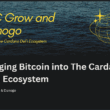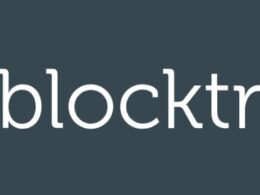In the rapidly evolving world of blockchain technology, the Cardano ecosystem stands out for its innovative approach to decentralization and infrastructure development. However, as numerous decentralized physical infrastructure network (DePIN) projects emerge, a significant challenge has surfaced: the lack of a unified platform to visualize and understand the geographic distribution of these projects. This gap not only hinders awareness and strategic planning but also limits the potential for synergies, community engagement, and investment opportunities within the Cardano network.
Cardinal aims to create a dynamic, interactive map that aggregates geolocation data from various Cardano DePIN projects, such as World Mobile Token (WMT) and Iagon (IAG). By gathering this data into a user-friendly visual format, Cardinal seeks to revolutionize how stakeholders access, interpret, and utilize information about the decentralized infrastructure spread across the globe.
As Cardano continues to expand, the ability to visualize the network’s physical infrastructure in real-time will be crucial for enhancing collaboration, driving informed decision-making, and supporting the ecosystem’s growth and scalability. In this article, we will explore how Cardinal plans to achieve these goals, the unique features of its platform, and the transformative impact it aims to have on the Cardano community.
Check out the proof-of-concept at: https://cardinal.bbhmm.net/
Impact
Cardinal represents a significant leap forward in how the Cardano ecosystem operates and grows. By streamlining access to geolocation data of Cardano’s decentralized physical infrastructure networks (DePIN), Cardinal enhances the ecosystem’s operational efficiency and clarity. The introduction of an intuitive map as the first key visualization tool for DePIN projects simplifies strategic planning and fosters collaboration among stakeholders. This improved transparency can attract investment and aid in more informed decision-making processes.
To ensure Cardinal achieves its goals and continues to meet the needs of its users, the team will implement a comprehensive approach to measure its impact. Monitoring the adoption of the Cardinal tool by tracking the number of users and the frequency of their interactions with the map will help the team understand how widely and effectively the tool is being used within the community. Additionally, periodic feedback from users will be crucial in gauging satisfaction and identifying areas for improvement. This will involve surveys, direct user comments, and other feedback mechanisms to ensure that the tool evolves in line with user needs and expectations.
To keep the community informed and engaged, Cardinal will provide regular updates about the development and enhancements of the tool through Cardano community forums and newsletters. These updates will offer transparency about ongoing improvements and new features, keeping users informed about the tool’s progress and capabilities. Our primary focus will be on ensuring that the tool meets the users’ needs through ongoing functionality improvements based on user feedback. While broad collaborations may be pursued in the future, the initial priority will be on refining and optimizing the user experience.
Feasibility
The Cardinal project is spearheaded by a team of two seasoned Cardano Stake Pool Operators, each bringing a unique set of skills essential for the project’s success. Keith Watt, an engineer with 25 years of software engineering experience, including a decade in the financial industry with companies such as Goldman Sachs, UBS, and JP Morgan, brings robust programming expertise to the team. His extensive background can be further explored through his LinkedIn profile.
Complementing Keith is Chad Giardina, who also has 25 years of IT infrastructure experience. Chad consults and supports mission-critical IT solutions on a global scale, making him invaluable for the infrastructure aspects of Cardinal. More details about Chad’s professional background can be found on his LinkedIn profile.
Together, they have been running the BBHMM (Blockchain Better Have My Money) Stake Pool since the Incentivized Testnet (ITN), leveraging their combined expertise to effectively integrate Geographic Information Systems (GIS) and mapping technologies into the Cardinal platform.
The Cardinal team has made significant strides in developing the platform, demonstrating their technical proficiency and effective data handling capabilities. To date, they have successfully integrated two substantial datasets of geolocation data from World Mobile and Iagon onto a global map. This achievement not only showcases their ability to manage and visualize complex data but also underscores the feasibility of their approach. The successful integration of these datasets is a testament to the team’s competence and the practicality of their solution.
As part of their commitment to transparency and community engagement, the Cardinal team is preparing to launch this interactive map on a dedicated website. This platform will make the geolocation data accessible to the entire Cardano community, fostering greater connectivity and operational efficiency within the ecosystem.
Value for money
The project’s development cost includes ₳32,608.70 for senior developer involvement at a competitive rate of $150 per hour, ensuring high standards of accuracy, security, and scalability. Hosting costs are ₳2,608.70 per year, providing robust server space with high availability and security at a competitive rate. The total projected cost of ₳35,217.39 represents a balanced investment with the potential for increased engagement and network growth, driving broader participation and attracting further investments and innovations. The Cardinal team is committed to transparency, providing regular updates and detailed reports to the Cardano community to ensure stakeholders are informed and can see the tangible benefits of their investment, reinforcing the overall value for money of the initiative.
The Cardinal project has successfully achieved its initial proof of concept, marked by the completion of the first milestone. This phase involved designing the project’s architecture, integrating APIs, and developing web-based visualizations. Moving forward to the second milestone, the focus shifts to integrating Cardano into the mapping and visualizations, aligning it with existing DePIN projects like Iagon and WMT. The third milestone entails containerizing the Cardinal web application to ensure scalability as community demand grows. Finally, the project culminates with the final milestone, which includes the public release of the Cardinal web application and the open-source release of its PostgreSQL database. These milestones mark critical progress points, ensuring that Cardinal delivers a robust, scalable, and transparent tool that enhances usability and strategic planning within the Cardano ecosystem.
Q&A with the team
Q1: Why did you decide to embark on this project? Why is DePIN important to you?
A1: I decided to embark on this project because I thought it would be interesting to plot the geo-location data of Cardano-related DePIN projects. Initially, I started experimenting with WMT’s and Iagon’s API location data of nodes and merged this information. After sharing these maps on social media, I received an overwhelmingly positive response. Although the process was manual at first, I brought in my teammate who was keen on automating it and developing an app around this concept. Together, we began building what is now the early version of Cardinal.
DePIN excites me because it represents a significant advancement in blockchain utility. It decentralizes data and network management, shifting control away from centralized entities to a more secure, community-based infrastructure. Today, centralized entities often misuse our data without our consent. DePIN empowers us to reclaim control over our data, ensuring it is used in ways we approve.
Q2: We only have two DePIN projects on Cardano which you already integrated into the proof-of-concept. What else is left to do that you need to get funding?
A2: We aim to integrate the registered relays of Cardano nodes into the platform. Additionally, as new projects become available, such as NuNet, we plan to incorporate them as well. Improving the user experience is another priority, particularly through enhanced visualizations and exploring different mapping solutions. We also intend to add more statistics to the site to allow for deeper data analysis. These enhancements will help us provide a more comprehensive and user-friendly platform, justifying the need for additional funding.
Q3: Will Cardinal support new DePIN projects in the future, should they arise from the ecosystem?
A3: Yes, we plan to incorporate all Cardano-related DePIN projects within Cardinal. We have already initiated discussions with NuNet about possibly integrating their nodes into Cardinal. Additionally, we are brainstorming other ideas, such as aggregating Cardano Beam data, which involves placing GPS-based assets on the Cardano blockchain. Our goal is to continuously expand and adapt Cardinal to support new projects as they emerge in the ecosystem.
Q4: Will Cardinal also show World Mobile EarthNodes when they are operational?
A4: If World Mobile makes the geo-location data of EarthNodes publicly available, we would be eager to integrate it into Cardinal. However, it is essential to find the right balance. For instance, knowing the exact GPS location is necessary for using AirNodes services, but for Iagon, revealing the exact location of the device could pose a security risk. Consequently, Iagon only publishes the city and country. Our approach will be to respect the level of detail each project deems appropriate for public sharing while ensuring the utility and security of the data.
Q5: What do you envision for the future of this project in case it gets funded?
A5: We envision Cardinal becoming the central hub for viewing all Cardano DePIN geo-location data and providing insightful statistics around it. Our goal is to create a comprehensive platform that offers valuable information and analytics, making it an indispensable resource for the Cardano community and DePIN projects.
Support this proposal when Project Catalyst Fund 12 voting starts on June 27th.
https://cardano.ideascale.com/c/idea/119788
For more information on DePIN projects on Cardano check out: https://adapulse.io/depin-projects-on-cardano/










